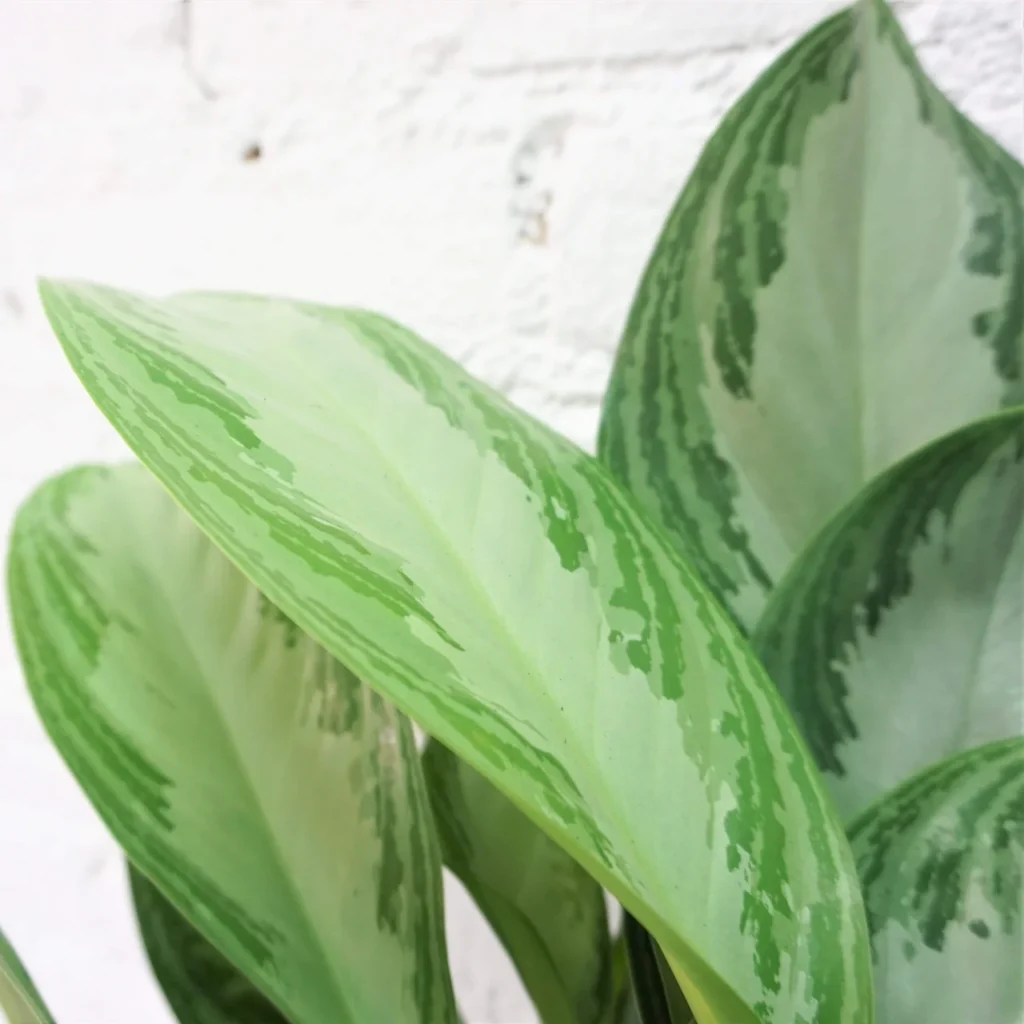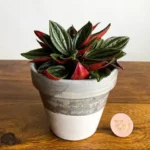Introduction
If you’re looking for a beautiful, low-maintenance houseplant with gorgeous foliage, Aglaonema ‘Silver Bay’ is a fantastic choice. Also known as Chinese Evergreen, this tropical plant is known for its striking silver-green leaves and its ability to thrive in low light conditions. Whether you’re just beginning your houseplant journey or you’re a seasoned indoor gardener, Aglaonema Silver Bay is a versatile and forgiving companion. In this care guide, we’ll walk you through everything you need to know to keep your Silver Bay healthy and thriving.
Plant Overview
- Common Name: Chinese Evergreen ‘Silver Bay’
- Botanical Name: Aglaonema ‘Silver Bay’
- Plant Type: Perennial, evergreen
- Family: Araceae
- Native Area: Asia and New Guinea
- Hardiness Zone: USDA 10–12 (indoor in most climates)
- Mature Size: 1.5–3 feet tall and wide
Light Requirements
One of the best qualities of Aglaonema Silver Bay is its adaptability to various lighting conditions. It performs well in:
- Low light: Ideal for offices, bathrooms, and low-lit corners
- Medium to bright indirect light: Encourages faster growth and more vibrant foliage
However, Aglaonema Silver Bay should be kept out of direct sunlight, which may scorch or fade its stunning leaves.
Expert Tip:
If the plant’s new leaves appear smaller or lose color, it may need more light. Try moving it closer to a window filtered with sheer curtains.
Watering
Aglaonema likes to dry out a bit between waterings. Overwatering is one of the most common mistakes made with this plant. To get it just right:
- Water when the top 1–2 inches of soil feel dry
- Reduce watering frequency in winter months
- Use room-temperature water to avoid shocking the plant
Signs of improper watering include:
- Yellowing leaves: Usually indicates overwatering
- Brown leaf tips: May signal underwatering or low humidity
Humidity and Temperature
Aglaonema Silver Bay thrives in warm, humid environments, mimicking its tropical origins. Here’s how to keep it comfortable:
- Ideal temperature: 65–80°F (18–27°C)
- Minimum temperature: Don’t expose it to below 60°F (15°C)
- Humidity: Prefers 50% or higher, but tolerates average home humidity
Humidity Boosting Ideas:
- Use a room humidifier
- Place a tray of water and pebbles below the plant pot
- Group with other humidity-loving plants

Soil and Potting
Aglaonema prefers a well-draining soil mix that retains some moisture but doesn’t stay soggy. A good mix might include:
- Regular indoor potting soil
- Added perlite or orchid bark for drainage
- Coconut coir or peat moss for balanced moisture
Ensure your pot has drainage holes to prevent root rot. Repot the plant every 1–2 years or when it becomes rootbound. Repotting is best done in the spring when the plant is actively growing.
Fertilizing
Fertilize your Aglaonema Silver Bay during the growing season (spring and summer) to encourage lush new growth. Use a balanced, water-soluble houseplant fertilizer at half strength every 4–6 weeks.
Fertilizing Do’s and Don’ts:
- Do: Fertilize when soil is moist to prevent root burn
- Do not: Over-fertilize; excessive nutrients can damage the plant
- Do not: Fertilize in winter when the plant is dormant
Pruning and Maintenance
Aglaonema Silver Bay is generally low-maintenance when it comes to pruning. Still, some quick grooming tips will help it look its best:
- Trim dead or yellowing leaves with clean scissors
- Wipe leaves regularly with a damp cloth to keep them dust-free
- Pinch off leggy stems to encourage bushier growth
Cleaning Tip:
Wipe the leaves once a month with a microfiber cloth or soak a clean sponge in lukewarm water to remove accumulated dust. This not only improves appearance but also photosynthesis efficiency.
Propagation
One of the joys of owning an Aglaonema Silver Bay is how easy it is to propagate and share with plant-loving friends. The simplest method is division:
- Remove the plant from its pot during repotting
- Gently separate root clumps with at least a few stems and leaves attached
- Replant in fresh soil and water well
Keep the new divisions in a warm, humid area with indirect light to help them establish quickly.
Pest and Disease Management
Aglaonema is relatively resistant to pests, but it’s good to stay vigilant. Watch out for:
- Spider mites – Fine webs/spots under leaves
- Mealybugs – White cottony masses along stems
- Scale insects – Brown bumps on leaves and stems
If pests appear, treat with insecticidal soap or neem oil. Isolate affected plants to prevent spreading.
Common Diseases Include:
- Root rot: Caused by overwatering or poorly draining soil
- Leaf spot: Caused by bacterial or fungal infections; remove affected leaves and improve air circulation
Is Aglaonema Silver Bay Toxic?
Yes, Aglaonema is considered toxic to pets and humans if ingested. It contains calcium oxalate crystals that can cause irritation, drooling, and stomach upset in cats, dogs, and people.
Pet Safety Tips:
- Keep the plant out of reach of pets and small children
- Consider placing it on shelves or in hanging planters in pet-populated homes
Conclusion
Aglaonema Silver Bay brings both visual elegance and ease of care into your indoor space. With its beautiful foliage and forgiving nature, it’s an excellent choice for beginners and seasoned plant lovers alike. Just follow a few simple care steps—adequate light, proper watering, and occasional grooming—and your Silver Bay will reward you with years of handsome, healthy growth.
Once you’ve enjoyed success with this resilient plant, you may find yourself exploring other charming Aglaonema varieties. Until then, happy planting!
References
- Costa Farms. (n.d.). Chinese Evergreen Plant Care. https://www.costafarms.com/plants/chinese-evergreen
- Missouri Botanical Garden. (n.d.). Aglaonema commutatum. https://www.missouribotanicalgarden.org/PlantFinder/PlantFinderDetails.aspx?kempercode=f410
- The Old Farmer’s Almanac. (n.d.). Houseplant Care Guide. https://www.almanac.com/houseplants-how-care-indoor-plants








